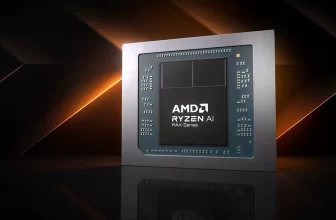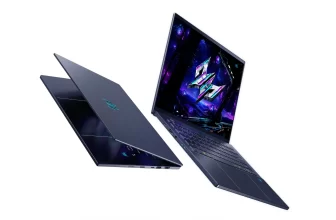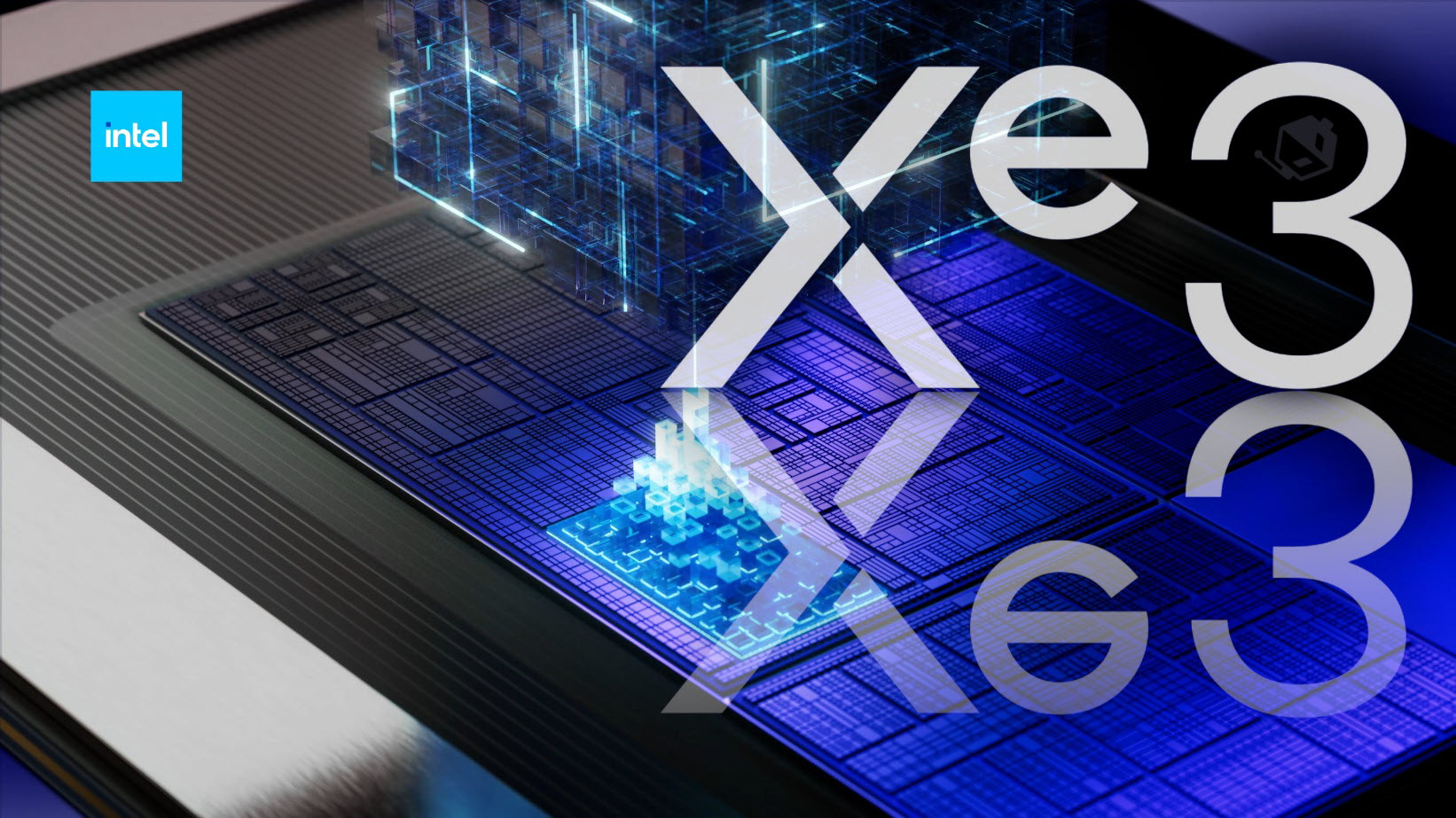
Intel’s upcoming Panther Lake lineup has made its first appearance in public benchmarks, with the Geekbench database revealing performance figures for the Core Ultra X7-358H. The leak offers an early look at Intel’s Xe3 “Celestial” integrated graphics architecture running in an upcoming ASUS ROG Zephyrus G14 laptop.
Benchmark Results and Performance Analysis
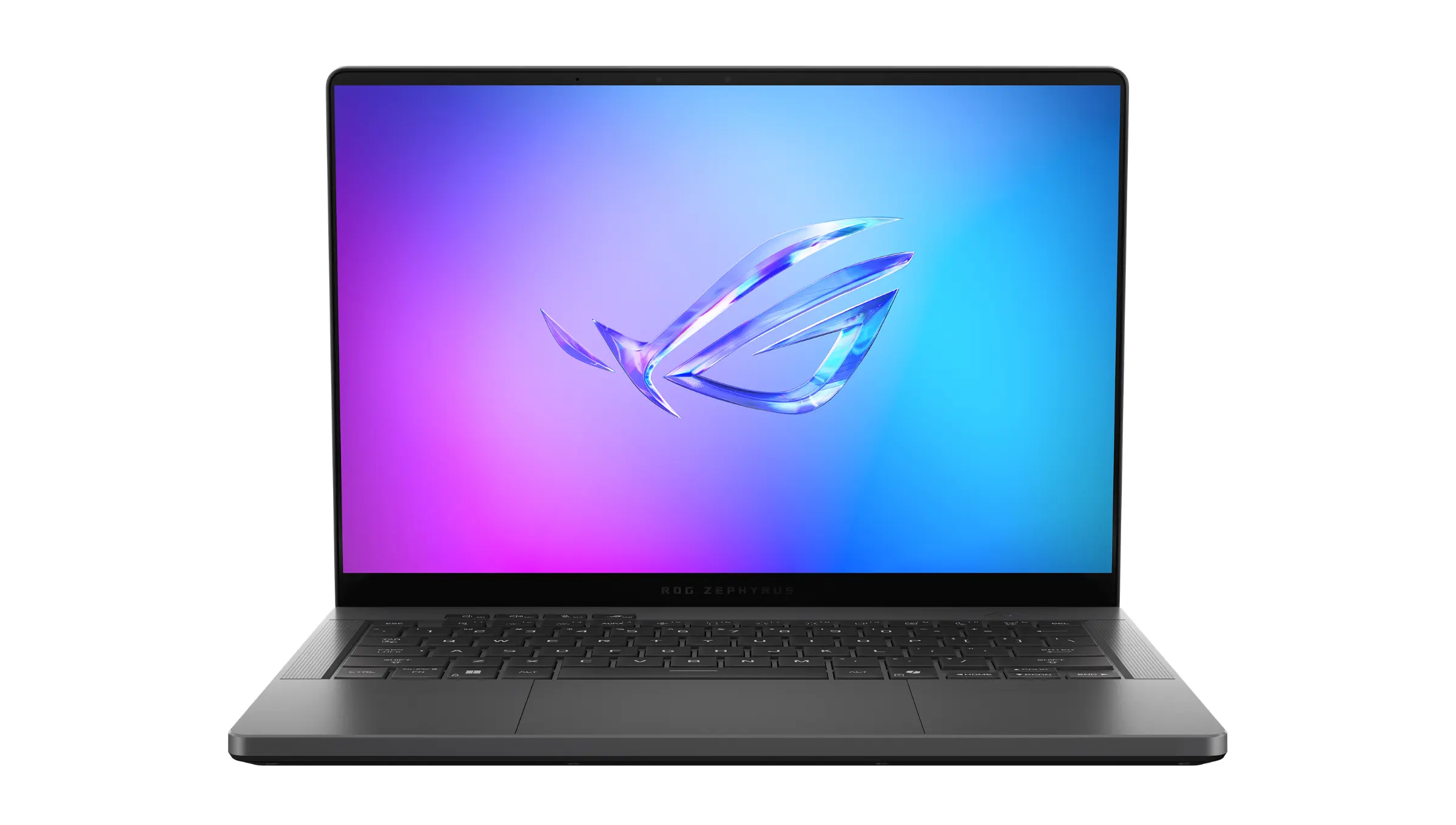
According to VideoCardz, the Core Ultra X7-358H appeared in multiple Geekbench 6.5 OpenCL test runs, with scores varying between approximately 46,171 points and 52,946 points. The variation in scores likely stems from using different power profiles or thermal states during testing, as all results came from the same ASUS ROG Zephyrus G14 (model GU405AA) test system equipped with 32GB of RAM.
The Xe3 integrated GPU demonstrated substantial performance gains over Intel’s current generation. When compared to the Arc 140V found in Lunar Lake processors, the Panther Lake iGPU shows improvements ranging from approximately 49% (using the lowest Panther Lake score against the highest Arc 140V result) to as much as 70% when comparing peak-to-peak performance.
| GPU | Architecture | Cores | OpenCL Score | Notes |
|---|---|---|---|---|
| Intel Core Ultra X7-358H (Xe3) | Xe3 Celestial | 12 Xe3 cores | 46,171 - 52,946 | Multiple test runs, likely different power modes |
| AMD Radeon 890M | RDNA 3.5 | 16 CUs | ~42,932 | Top-tier Strix Point iGPU |
| Intel Arc 140T | Xe-LPG+ | 7 Xe cores | ~40,861 | Arrow Lake-H integrated graphics |
| Intel Arc 140V | Xe2 Battlemage | 8 Xe2 cores | ~27,000-31,000 | Lunar Lake integrated graphics |
| Intel Arc A550M | Xe Alchemist | 16 Xe cores | ~50,000+ | Discrete GPU, 60-80W TDP |
| NVIDIA RTX 3050 Mobile | Ampere | 2048 CUDA cores | ~54,000 | Entry-level discrete GPU |
It should be noted that OpenCL benchmarks have historically not been Intel’s strongest showing, as AMD and NVIDIA GPUs typically perform better in this specific test. With that in mind, the scores place the Panther Lake iGPU in the same general performance bracket as the Arc A550M discrete GPU and close to NVIDIA’s mobile RTX 3050. Of course, these results don’t fully represent real-world gaming performance, particularly given that these could be engineering samples running on early drivers.
Hardware Specifications
The Core Ultra X7-358H is part of Intel’s premium “X” SKU designation, which indicates the top-tier configuration with maximum integrated graphics capabilities. The processor features a 16-core CPU arrangement with 4 Cougar Cove P-cores, 8 Darkmont E-cores, and 4 Darkmont low-power E-cores.
| Component | Specification |
|---|---|
| CPU Cores | 16 cores (4P + 8E + 4LP-E) |
| CPU Base Clock | 1.90 GHz |
| CPU Boost Clock | Up to 4.78 GHz |
| L3 Cache | 18 MB |
| L2 Cache | 8 MB |
| iGPU Architecture | Xe3 "Celestial" |
| GPU Cores | 12 Xe3 cores (96 compute units / XVEs) |
| GPU Clock Speed | 2.5 GHz (reported in test) |
| GPU L2 Cache | 16 MB |
| Shared Memory | Up to 16 GB (system memory) |
| Memory Support | LPDDR5X-9600 MT/s (up to 96 GB) |
| Manufacturing Process | Intel 18A (CPU), TSMC N3E (GPU) |
| Default TDP | 45W (Panther Lake-H series) |
The Xe3 GPU configuration detected in Geekbench shows 96 compute units, which aligns with the 12 Xe3 cores specification (8 vector engines per core). The integrated graphics can access up to 16GB of shared system memory, with the platform supporting LPDDR5X memory at speeds up to 9,600 MT/s. The GPU tile itself is manufactured on TSMC’s N3E process, while the compute tile uses Intel’s 18A node.
Architectural Improvements
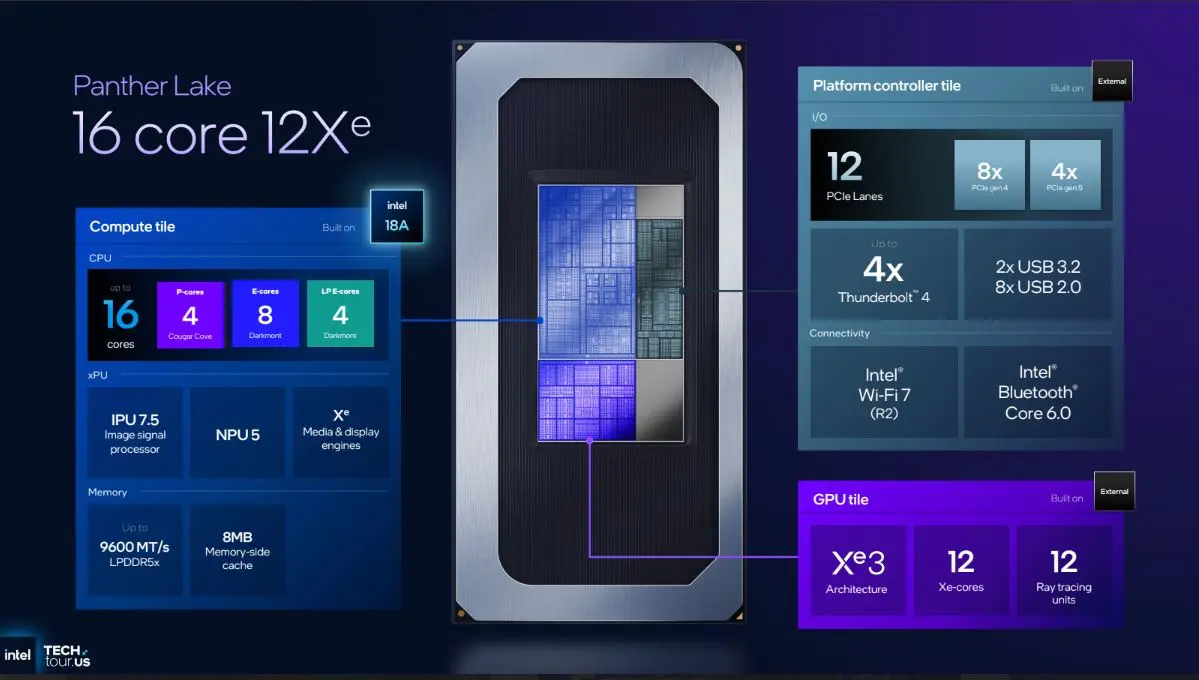
Intel’s Xe3 architecture introduces several enhancements over the previous Xe2 generation. According to Intel’s official technical disclosure, each Xe3 core features 8 vector engines with 512-bit width and 8 XMX engines for matrix operations. The architecture delivers 25% more threads per vector engine and introduces variable register allocation. The 16MB L2 cache is a substantial increase over Lunar Lake’s 8MB, which should help reduce memory bandwidth bottlenecks that often limit integrated GPU performance.
Intel has claimed that Xe3 delivers over 50% higher performance than Xe2 at the same power level, a target that these early benchmarks appear to support (at least in synthetic workloads). The company also cites improvements ranging from 1.0x to 7.4x in various micro-benchmarks, with the largest gains in depth writes and high-register-pressure shader operations.
On Par with Radeon 890M?
The leaked benchmark results position Intel’s upcoming integrated graphics closer to AMD’s current flagship Radeon 890M, though with a variable lead depending on which score is considered. At the low end of the Panther Lake scores, the X7-358H shows approximately 7% better performance than the Radeon 890M. At the high end, that advantage extends to roughly 23%.
However, AMD’s upcoming Strix Halo platform with its 256-bit memory interface is in a different category of integrated graphics solutions. While Panther Lake’s 12 Xe3 core configuration should exceed AMD’s standard Strix Point processors, the Strix Halo design targets higher performance tiers that may remain out of reach for mainstream integrated graphics.
Important Caveats
Again, the tested system is likely a pre-production engineering sample that doesn’t reflect final silicon performance or power characteristics. Driver maturity is also a significant consideration, as early drivers often lack the optimizations that can substantially improve performance by launch.
Also, OpenCL benchmarks, while useful for measuring compute performance, do not correlate with gaming performance all that much. Graphics APIs such as DirectX 12 and Vulkan, along with real-world game testing, will provide more relevant performance indicators for anyone interested in the gaming capabilities.
The ASUS ROG Zephyrus G14 model identified in these benchmarks is likely to feature a dedicated GPU in addition to the Intel iGPU, so it’s not an indication of how this particular laptop will perform in games.



